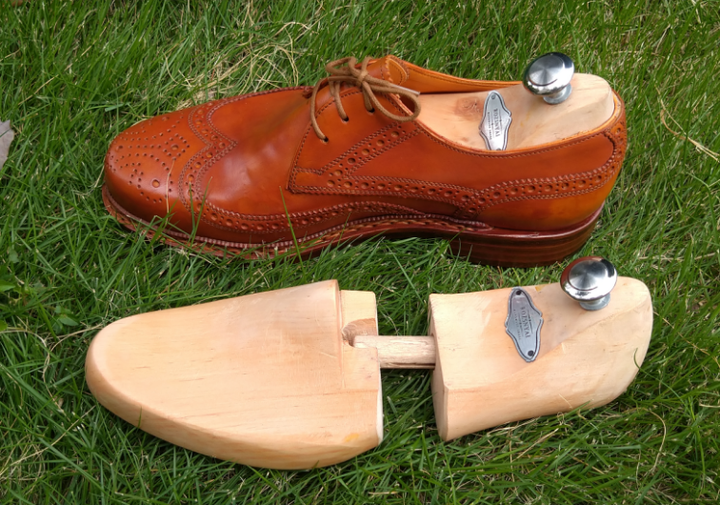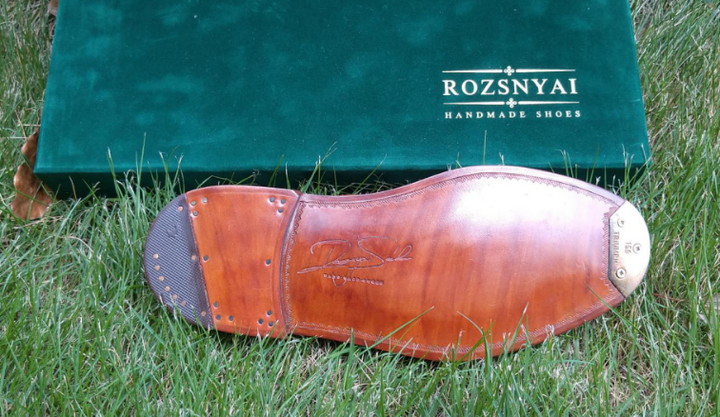This is a very niche continental aesthetics of dress shoes.
When it comes to dress shoes, the first country that comes to mind is definitely the United Kingdom. What we now think of as orthodox styles and shapes were carried forward by England.

Before that, the British aristocracy imitated the French aesthetic, such as this.

For a thousand-year entanglement between Britain and France, you can have fun reading Stephen Clarke’s 1000 Years of Annoying the French.
Then comes to Italy, the mainstay in fashion. I don’t know about women’s fashion, but men’s fashion, except that street style is American led, everything else is basically dominated by Italy. Just look at the number of fashion brands. Italian shoes are more diverse and changes during different generations are significant.

At present, the common feature is that the shoes are elongated.

Today’s French shoes, to a large extent, follow the British. When you look at many top brands of bespoke or mainstream lasts, they are British round toe.

But their lasts are more coquettish and sharper which is not shy of showing a French-style.

I think the easiest method to distinguish the taste of France is to look at the relatively narrow last.

Next, the United States. In fact, who has a greater global influence than French shoes. French brands may be positioned more up-end, and in fashion, of course France is at the top of the food chain. The characteristic of American shoes is that they are a little more stupid. Can be seen as the rough cousin of British shoes.

Then we count to Central or Eastern Europe. Here, the style is called German-Austrian or Austro-Hungarian, but the latter is more accurate. Because firstly, there was an empire called Austria-Hungary, and secondly, Germany (territory) never has a developed footwear industry. During the Austro-Hungarian period, Austrian regions, such as Vienna, were the center of footwear. By the time of the Soviet Union, Hungary had supplied Eastern Europe with a large number of shoes. In addition to the fact that many German bespoke shoemakers studied in Hungary.

If American shoes are the muscled cousin of British shoes, then the Austro-Hungarian style is a strong man!

This style is reflected in all aspects of the shoes.
First is the last, and the most prominent is the towering forehead like sperm whales.

Another last like the mouth of a platypus is the most traditional Austro-Hungarian last called Budapester.

The second is the sole, which is not directly related to the craftsmanship, but the Austro-Hungarian style is truly rugged, and the waist of the shoe is to be flat and wide.

Finally, the style. Most styles are not special, except for the two iconic, Viennese and Budapester which are regionally original. Sitting on Austro-Hungarian last, there is an absolute sense of wild power.

When it comes to brands, one is Austria’s Saint Crispin’s and the other is Hungary’s Vass.
These two are recognized by the mainstream because they incorporate a lot of Italian elements. The lasts that receive popularity of Vass are developed by Italian master shoemaker Roberto Ugolini.

Saint Crispin’s developed its lasts in-house, but Italian influence is very visible with elongated and squashed toes. This makes the Austro-Hungarian last feel less oppressive, rounded and charming.

This is the status quo and fate of Austro-Hungarian shoes, insist on themselves, you can only reside a corner of the world, meet the aesthetics of the region; if you want to get a wide audience, you have to succumb to the aesthetics of the country with fashion discourse. How much to integrate, or give up on yourself altogether, is a question, in my opinion, Saint Crispin’s is 70% Italy and 30% Austria-Hungary, is this the best ratio? I have no idea.

We have reached a crossroads in history.

